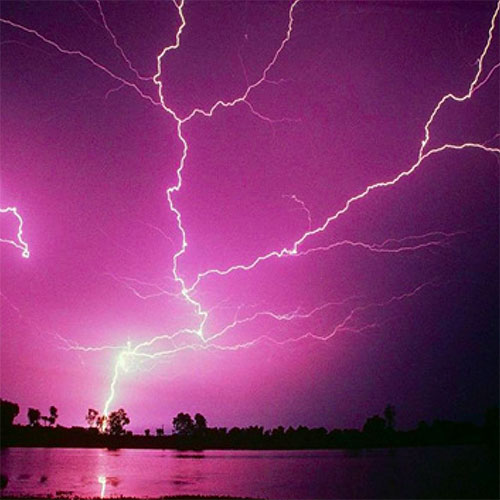Plasma technology provides greater benefits vs. traditional techniques for an efficient surface preparation
Plasma versus Corona
What is the difference between plasma and Corona? What are their respective pros and cons?
To provide a clear answer, one must differentiate the use of these words according to whether they describe a physical phenomenon or a technology.
Plasma and corona as physical concepts

Physically speaking, plasma is a gas which has undergone an energy increase and has become an ionised medium.
This means that some of the atoms or molecules have a non-zero electrical charge, either as a result of the release of one or more electrons (which then become free electrons), or because one electron was absorbed. Plasma thus contains many species: free electrons, positive or negative ions, radicals, metastates. These species’ properties, together with the associated electromagnetic rays are later exploited when using plasma as a technology.
Therefore, part of its atoms or molecules bear a non-null electrical charge, either because one or more electrons have been torn off (they become free electrons), or because one electron was absorbed. Plasma therefore includes a large variety of species: free electrons, positive or negative ions, radicals, metastable. These species’ properties, together with the associated electromagnetic rays are later exploited when using plasma as a technology.
In Physics, the Corona effect is a phenomenon achieved in a plasma – the latter being created with a discharge generated between 2 asymmetrical electrodes, one of which is pointed. The electrical field is therefore higher on the pointed side, where the plasma is generated around the pointed electrode, creating small crackling arcs, called the corona effect.
Sailors are familiar with this curious phenomenon – dubbed Saint Elmo’s fire. When sailing under stormy conditions, an isolated ship may host this phenomenon atop the mast, crackling with micro fire arcs – the mast embodies the pointed electrode, whereas the other electrode is represented by electrically charged clouds. Saint Elmo’s fire can also be seen on planes’ wings.
Plasma and corona as technologies
Corona treatment is a technology used for fast (several hundreds of meters / minute), large width (several meters) processing of plastic foils.
Plastic film is mounted onto a supporting roll connecting to ground (earth).
A pointed electrode is mounted facing the roll, which allows easy generation of the electrical discharge in the air.
This similarity is the reason why the term “corona” was chosen to describe this technology – however this is the only point in common !
Atmospheric pressure cold plasma technology uses the principle of physical plasma, too.
An electrical discharge is created in an atmospheric pressure gas with a low electrical current. The product thereof is directed onto the surface to be treated. Gasses mainly used include air, nitrogen, helium, argon – sometimes even a blend of the above.
Electrical intensity of plasma is about 1 ampere. When the temperature inside the plasma reaches several hundred degrees °C, it is classed as “cold” as opposed to thermal plasma used for cutting or propelling – during which plasma peaks at several thousands of °C.
Species generated during the plasma discharge are propelled outside of the discharge zone and the gas flows at a regular rate to reach the target surface. Therefore, species creation (electrical discharge) can be dissociated from the surface reaction (treatment). Plasma is said to be blown. Unlike blown corona, blown plasma is very homogeneous and looks like a flame.
Plasma vs. corona: which one to choose?
Corona treatment was used for industrial purposes long before atmospheric plasma. This technology requires little investment, hence reinforcing its attractiveness. However, this technology has many limitations:
- non-homogeneous output & treatment
- treatment can alter surfaces (traces, impact spots)
- treatment can pierce foils or treat back surfaces randomly.
- open air, high voltage hazard – with potential electromagnetic radiation
- treatment of conductive materials requires a change of
- low efficiency treatment
Because of the clear separation between the electrical discharge and the treatment of the surface, plasma has none of these drawbacks, providing a value-added solution that is easy to integrate into production lines.
As a consequence, plasma is gradually replacing corona in industry. Corona is now mainly used for the processing of films with low or medium added value, requiring wide treatments (several meters) at high speed (> 100 m/min).
Plasma vs. adhesive primers
Using mainly air and nitrogen, plasma surface treatment by atmospheric plasma is a clean and environmentally friendly technology. Except for a few specific applications, there is no need for chemicals and the treatment does not produce effluents.
All that is required is an effective ventilation system located in the treatment area of the industrial installation.
Atmospheric plasma offers the same efficiency as chemicals when preparing a bond with strong and long-lasting adhesion.
With excellent reproducibility, it offers an interesting alternative to chemicals subject to increasingly stringent environmental regulations.
Plasma vs. flaming
Atmospheric plasma treatment is considered a low-temperature technology in comparison to flaming. Yet, plasma treatment achieves the same bonding and laminating capacities for plastics as flaming – without the thermal impact.
In addition to the preservation of the treated material, plasma treatment virtually reduces the risk of fire. This is a key aspect for the safety of personnel and equipment, especially in industrial environments using flammable products (glues, paints, varnishes, etc.).
Flaming also results in less regular and difficult-to-control treatments, which are more difficult to replicate identically.
The only constraint of plasma processing is the maximum distance of a few centimetres at which the plasma jet must be placed in relation to the surfaces to be treated. If larger distances are necessary, flaming remains a solution.
